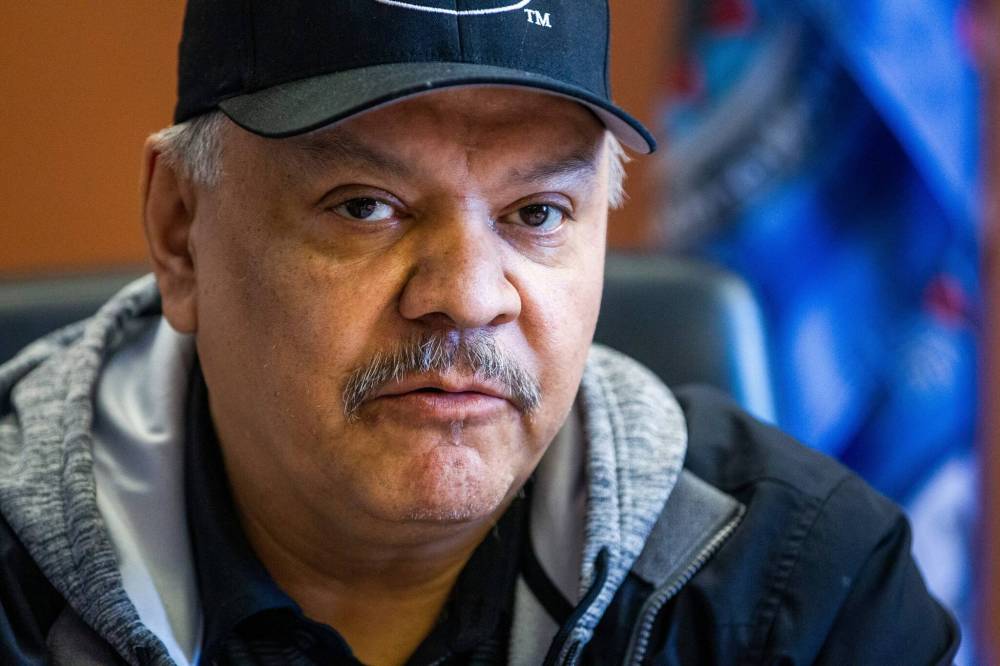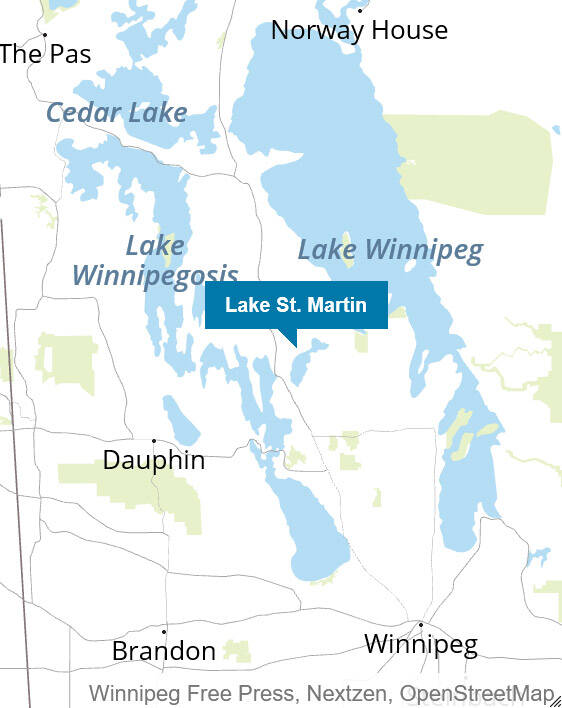Manitoba delays Interlake flood outlets yet again
Advertisement
Read this article for free:
or
Already have an account? Log in here »
To continue reading, please subscribe:
Monthly Digital Subscription
$0 for the first 4 weeks*
- Enjoy unlimited reading on winnipegfreepress.com
- Read the E-Edition, our digital replica newspaper
- Access News Break, our award-winning app
- Play interactive puzzles
*No charge for 4 weeks then price increases to the regular rate of $19.00 plus GST every four weeks. Offer available to new and qualified returning subscribers only. Cancel any time.
Monthly Digital Subscription
$4.75/week*
- Enjoy unlimited reading on winnipegfreepress.com
- Read the E-Edition, our digital replica newspaper
- Access News Break, our award-winning app
- Play interactive puzzles
*Billed as $19 plus GST every four weeks. Cancel any time.
To continue reading, please subscribe:
Add Free Press access to your Brandon Sun subscription for only an additional
$1 for the first 4 weeks*
*Your next subscription payment will increase by $1.00 and you will be charged $16.99 plus GST for four weeks. After four weeks, your payment will increase to $23.99 plus GST every four weeks.
Read unlimited articles for free today:
or
Already have an account? Log in here »
Hey there, time traveller!
This article was published 10/04/2024 (570 days ago), so information in it may no longer be current.
Thirteen years after a huge flood drove out residents of an Interlake First Nation, long-promised mitigation measures have been put on hold again.
Two proposed outlet channels, which would alleviate potential flooding around Lake Manitoba and Lake St. Martin, are being delayed due to a lack of consultation with the Indigenous people who live there.
Infrastructure Minister Lisa Naylor confirmed more work on that front will have to be done before construction on the channels can go ahead.

MIKAELA MACKENZIE / FREE PRESS FILES
Chief Cornell McLean, chairman of the Interlake Reserves Tribal Council, says the process can’t move forward until they’ve been heard.
“We’ve been back to square one with the consultations over the last two months,” Naylor said on Tuesday. “I’ve had the opportunity to meet with a number of chiefs from communities affected by the channel project and by the flooding.
“It became very clear, very quickly, after coming into this role, that the previous government had not done appropriate consultations with the community.”
The project would allow water in Lake Manitoba to flow into Lake Winnipeg via Lake St. Martin, which is where the First Nation that has the same name is located, 250 kilometres north of Winnipeg.
The minister suggested proposed locations for the outlets and necessary bridges would be scrapped: “It’s not consultation if we already know the end result.”
Chief Cornell McLean of the Lake Manitoba First Nation, which was also flooded in 2014, said he’s pleased the provincial government has confirmed what Premier Wab Kinew had promised.
“This whole assessment needs to be redone again. It’s all about inclusion; we didn’t have consultations. It’s good our concerns are being heard. We’re not opposed to it (but) we want to be part of the process,” said McLean, who is chairman of the Interlake Reserves Tribal Council.
McLean said Kinew talked about a “reset” when he met with the council and repeated that promise during a recent conversation.
Assembly of Manitoba Grand Chief Cathy Merrick also called for a pause on the project to launch “a comprehensive and transparent consultation process guided by the principles of free, prior and informed consent.”
“This process must actively involve First Nations leadership, knowledge keepers and elders… continuing with this project disregards these rights and undermines reconciliation efforts in this province.”
It’s another delay in the controversial saga that started in 2011 when the Assiniboine River watershed had a major flood.
To protect Winnipeg properties from being extensively flooded — which would have caused hundreds of millions in damages — river water was diverted into Lake Manitoba through the 29-kilometre channel at Portage la Prairie (Portage Diversion).
The ensuing weeks of high water levels on the lake — which experts said was a once-in-2,000-year flood — destroyed homes and cottages during spring storms, and caused the displacement of 2,000 people from their homes and another 600 residents from the Lake St. Martin First Nation.
Greg Selinger, who was premier at the time, ordered the construction of a $100-million emergency channel from Lake Manitoba to Lake St. Martin, and a second channel from Lake St. Martin into Lake Winnipeg.
Attention quickly turned to building two permanent channels as a solution for future floods.
The channels had long been viewed as the final piece of the province’s major floodworks, which started after the 1950 Winnipeg flood, and resulted in the construction of the Red River Floodway, Portage Diversion, Shellmouth Dam, and raising of dikes and buildings in the Red River Valley.
In the fall of 2014, the provincial government pegged the cost of the two channels at $450 million.

By 2018, the Pallister government said the project would cost $540 million and was able to get the federal government to agree to pay up to $247.5 million through a disaster mitigation fund.
“After 60 years of inaction, we are proud to stand today, alongside our partners in the federal government, to announce this vital project,” Premier Brian Pallister said at the time.
“We are focused on completing this project in a timely fashion to better protect Manitobans who have sacrificed so much.”
In 2022, the cost jumped to $600 million.
On Tuesday, McLean said the process can’t move forward until they’ve been heard.
“We are not against saving the people of Winnipeg, but we don’t want to be sacrificed.”
The flood spawned several lawsuits. In 2022, $85.5 million was paid to business and property owners around Lake Manitoba by the provincial government; in 2019, $90 million was paid to four Indigenous communities that were flooded.
On Monday, the Impact Assessment Agency of Canada published its draft environmental assessment report on the Lake Manitoba and Lake St. Martin channels project as a next step before getting comment from the public and Indigenous groups.
The report said the channels would negatively affect the environment, including wildlife and fish habitat.
It concluded Indigenous people in the area would suffer direct and cumulative adverse impacts, including loss of access and spiritual connection to the land, as well as negative effects on sites or things with “historical, archeological, paleontological and architectural significance.”
Once construction starts on the proposed Lake Manitoba outlet channel, located 9.3 km from the Pinaymootang First Nation, and the channel from Lake St. Martin, 4.6 km from the Dauphin River First Nation, it will take six years to complete.
Each channel is about 24 kilometres long.
kevin.rollason@freepress.mb.ca

Kevin Rollason is a general assignment reporter at the Free Press. He graduated from Western University with a Masters of Journalism in 1985 and worked at the Winnipeg Sun until 1988, when he joined the Free Press. He has served as the Free Press’s city hall and law courts reporter and has won several awards, including a National Newspaper Award. Read more about Kevin.
Every piece of reporting Kevin produces is reviewed by an editing team before it is posted online or published in print — part of the Free Press‘s tradition, since 1872, of producing reliable independent journalism. Read more about Free Press’s history and mandate, and learn how our newsroom operates.
Our newsroom depends on a growing audience of readers to power our journalism. If you are not a paid reader, please consider becoming a subscriber.
Our newsroom depends on its audience of readers to power our journalism. Thank you for your support.


